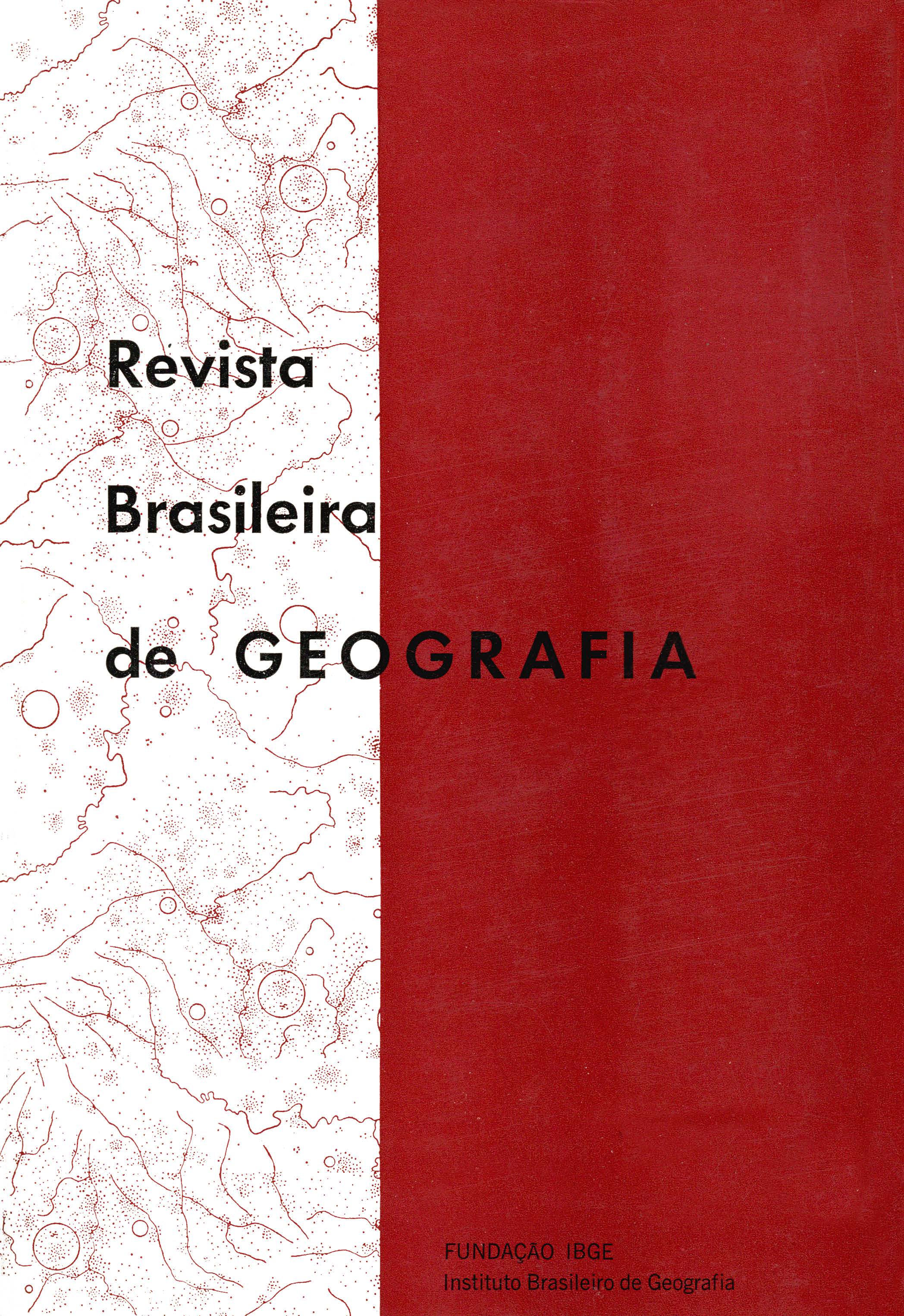O Processo de difusão no sistema urbano brasileiro : análise do padrão de distribuição espacial de centros urbanos e seu ajustamento a distribuições de probabilidades
Palavras-chave:
Geografia quantitativa, Geografia urbana, Urbanização, Cidades e vilasResumo
The author, in his work, aims at demonstrating; the utilization of the technique of grids, connected with the probabilistic distribution models of Poisson and the Negative Binomial, adopting for application the study of the spatial distribution patterns of the urban centers. This technique originates with the division of the field under study in grids covering this same area, which engenders a distribution of frequencies of the urban centers per grid. This distribution is then adjusted to the theoretic model, In this case, Poisson or the Negative Binomial.
The adjustment to a Poisson model signifies that there is no factor operating with sufficient force to engender a definite spatial pattern. An adjustment to the Negative Binomial, on the other hand, reveals a spatial concentration of the urban centers. Bearing in mind that what is to be arrived at through application of these models is the determination of what process is at work in the emergence of the centers, a contiguity analysis was effected, In addition, for the purpose of verifying whether this implies the existence of a process of diffusion and whether this latter possesses any specific directionality.
For practical application of these techniques, two areas were chosen, both covering approximately the whole of the Northeast and the Center-South. These two initial areas were later on subdivided, the Northeast into "Sertão" (drought-ridden hinterland) and "Zona da Mata" (vegetation-rich zone) - also called the Reduced Northeast - and the Center-.South into two more developed areas, one of which with farther reach, which was called the Reduced Center-South, and the other corresponding more closely to the boundaries of the São Paulo Area of Influence.
The analysis was realized at two levels: for the whole of the urban system, taking In to account the totality of the seats of the municípios (cities), and besides, only for the centers grown by influence of the market forces, just as they were classified in the '·Division of Brazil into Functional Urban Regions" IBGE Foundation.
It became apparent that, as far as the Northeast is concerned, the model which describes the spatial pattern is that of the Negative Binomial, just as much applying to the centers as to the cities. Taking into consideration the Reduced Northeast only, the distribution of cities and 4b level centers continues to follow the same model. The 3b level centers which are hierarchically superior, however, offer a pattern described by the Poisson distribution.
In the Center-South, the 4b centers adjust themselves to a Negative Binomial distribution, but in the reduced area this pattern is substituted by a Poisson model. The cities tend to follow this model in the more developed area, that is to say, in the São Paulo Area of influence. The 3b level centers were only studied in the two reduced areas and there, the pattern they show is typically Poisson.
The results of these analyses once again confirm that, the more a region is developed, the less subject to splitting into nuclei is the distribution of its urban centers and the better this latter is balanced.






